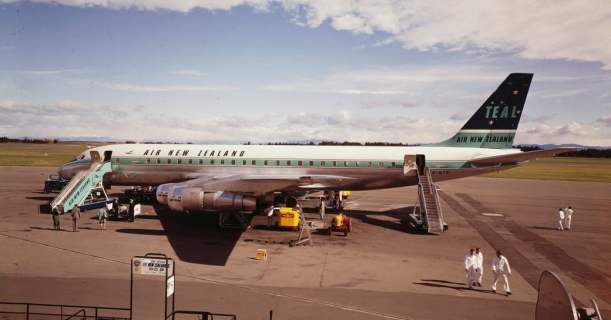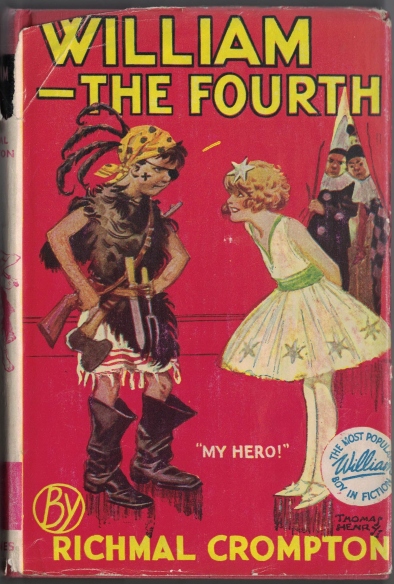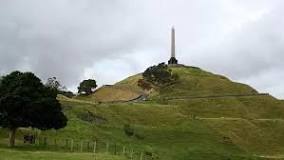On our return to Singapore I received a letter from head office informing me that I was to fly to Calcutta to join an Australian bound ship.
More frequent flyer points lost . . .

I flew to Calcutta and stayed at the Great Eastern Hotel, which had been a hotel since 1840 and it still had the Raj feeling. It has been called the Jewel of the East, also The Savoy of the East, and carried various names until 1915 when it was renamed The Great Eastern.
Its original name was Auckland Hotel, so named after George Eden who was the 1st Earl of Auckland, the then Governor of India. Originally it had a department store under the hotel, and it is said that “a man could walk in at one end, buy a complete outfit, a wedding present, or seeds for the garden, have an excellent meal, a burra peg (double gin) and if the barmaid was agreeable, walk out at the other end engaged to be married”
It was the hotel where ‘everyone’ stayed when visiting Calcutta – Nikita Khrushchev, Queen Elizabeth II, Mark Twain, Dave Brubeck (I wish he’d been there when I was there), and many others
The above picture is from a Great Eastern 1930 post card – it hadn’t changed much when I stayed there in 1966. The Government took over the running of the hotel in the 1970’s and sold it to a private company in 2005.
Until it closed in 2005 for extensive renovations, it was the longest continuous operating hotel in Asia. It was partly reopened in 2013 and is still being renovated.
From memory I think I stayed in the hotel for two nights before joining MV Bankura.

Launched in 1959, so she was ‘new’ as far as I was concerned being only seven years old. She was 6793 gross tonnes, with deck cranes rather than derricks, and she was fully air-conditioned.
She was one of five ships in her class and one of the first UK built ships to have AC current for all deck purposes. Her trading route was to be Calcutta to Australia and New Zealand, thousands of miles away from the Persian Gulf – I couldn’t wait!
All of British India Navigation Co vessels were named after places that ended in ‘a’. Uganda, Kenya and of course Bankura, which is a town in West Bengal, India, and is not all that far from Calcutta, only about 168 km.
The Company began in 1856 and the first route was Calcutta to Rangoon, which at that time the Company’s name was the ‘Calcutta & Burmah Steam Navigation Co Ltd.’ It was not until 1862 that the name changed to become British India Steam Navigation Co.
…………………………………………………………………………………………………………..
In 1947 India was ‘partitioned’, and the partition was based on two main religions – Muslim & Hindu.
The Muslim majority in the west became the Islamic Republic of Pakistan, and the Muslim in the east became East Pakistan. The Province of Bengal (which was in the east) was split between India and Pakistan . The western areas were allocated to India and the Eastern areas to Pakistan.

The green area near Burma is Eastern Bengal, soon to become East Pakistan.
(Map from the internet)
West Pakistan, was 1600 km to the west, on the other side of India.
Political upheaval in in West Pakistan in the late 1950’s and through the 1960’s caused unrest in both West & East Pakistan.
After the 1970 general election the Eastern politicians had 167 seats out of 300, but the military junta in the west dragged their feet to transfer power.
Civil disobedience broke out in East Pakistan and they advocated Independence from Pakistan. In 1971, on Pakistan’s Republic Day many households in East Pakistan flew the Bangladeshi flag.
The Pakistani army cracked down on the dissidents and civil war broke out – certain West Pakistan military units based in East Pakistan, went over to the Bangladeshis.
The war lasted nine months, but in the end the Pakistanis in East Pakistan surrendered to the joint forces of the Indian Army and the Bangladeshi guerrilla forces. The new independent State of Bangladesh came in to existence in December 1971.

Bangladeshi flag in 1971

The current flag of Bangladesh.
The history of the partition of India makes interesting reading, as well as being a very sad episode in the history of that country, because millions were displaced as they moved either to Pakistan or India, depending on their religion, and it is estimated that well over half a million died during the Indian / Pakistani exodus.
……………………………………………………………………………………………………………………….
We worked cargo around the clock for the next eight days – my shift was 6 am to 6 pm. It was hard work in the humidity of Calcutta, and left little time for pleasure.
We sailed on the eighth day for Chalna in East Pakistan (as it was called then).
To reach Chalna it required us to sail up the Pasur River for around six hours. This river is a tributary of the Ganges.
We didn’t go alongside – I don’t think, in those days, that they had the facility for deep sea vessels to go alongside. Floating warehouses came out to us and we used our own cargo to gear to work cargo.

Jute, in the form of bales, was the main export at that time, along with tea.
After we had finished in Chalna we sailed to the mouth of the river, anchored and waited for the tide so as to pass over the sand bars, and then set course for Chittagong.
We had three days in Chittagong before our next port which was Trincomalee in Ceylon (now Sri Lanka).
Trinco, for me, meant water skiing, but this time things didn’t quite work out as planned.

On previous visits to Trinco I’d been shown how to ‘water ski’ by being towed on a hatch board behind a lifeboat. We may not have been a cruise ship but we had all the right gear. . . . .
This time two of us borrowed a lifeboat and motored off to a clear area for a swim and possibly to water ski, only to have the motor breakdown, and we failed to get it restarted. During our frantic efforts to get the engine going the lifeboat was drifting further and further from the ship. The only thing left for us to do was to row!
By the time we returned to the Bankura our arms were coming out of their sockets. Rowing a ship’s lifeboat, which has a capacity to carry twenty to thirty men is very hard work for two.
We spent two days loading tea, after which we sailed for Port Swettenham in Malaysia.
As we approached the port, our radio contact was to Klang exchange on the Klang River, which was the old port before the railway arrived from Kuala Lumpur in 1890.
The port was named after Sir Frank Swettenham, who became Selangor’s Resident in 1882, and he initiated the start of the rail track between Kuala Lumpur and the main port of Klang, which was twenty four miles from the capital KL.
Once we were alongside at 6.00 pm, a few of us made a bee line for KL. The evening was not a particularly memorable night. The drive took a lot longer than we expected and the return, after a few beers and a meal, took the edge of the whole evening. The roads in the mid-60’s were not to the standard of today.
The following evening, after work had stopped, I decided to visit the Hollywood Bowl Massage Parlour, because I’d never had a massage.
I hadn’t a clue what to expect. I had a basic idea of massages, but when I was covered in talcum powder during the massage I couldn’t stop sneezing and called it quits, and went back to the ship for a shower and a beer.
It would be thirty eight years later before I would try a massage again, when I was on holiday in KL in 2005.
We were a party of four couples who were staying at the Renaissance Hotel, and the hotel recommended a particular parlour to visit. Three of us men decided to give it a go, and the difference was like chalk and cheese, and I didn’t have a sneezing fit.
From Klang / Port Swettenham our next port was Singapore. After two days of working cargo we were off to Australia!

As we approached Northern Australia (Torres Straits) we picked up a Torres Strait pilot who piloted us through the Straits and the Great Barrier Reef to Townsville in northern Queensland.

We had less than 24 hours in Townsville after which we were off to New Zealand. The one thing I remember about Townsville was that some of the pubs had bat wing doors – all very old west, but very real.

Picture found on the internet – it was taken in 1958, but it had hardly changed when I visited in 1966
The Bankura had cargo tanks as part of her cargo space, and from Townsville we loaded molasses, which wasn’t much different from the Ellenga’s crude oil that we loaded in the Gulf, both had to be kept in a liquid state to assist discharge.

If you grew up in the UK not long after the end of the war this might bring back a memory or two. Besides spooning it on your cereal it can also be the basis for rum!
The voyage to Auckland was a rolling down to Rio type voyage that took some getting used to, but after five and a half days we entered Auckland harbour.
I’m glad that I was the junior officer, because it took me a few ‘noons’ to get the noon site correct due to the rolling.
It was all very well doing it in a classroom or when the sea was calm, but matching the roll of the ship and managing to record the exact time of noon when the sun kissed the horizon was a skill I had to quickly learn.

Picture from the internet

Auckland in the mid-sixties was very different than the Auckland of today. I do remember that at main street junctions when the all the lights turned red and the traffic stopped to allow the pedestrians to walk diagonally across the junction if they wished. This system was introduced in 1958 in New Zealand, but not in the UK until 2009.

At that time the population of Auckland was about half a million, and the streets didn’t feel as packed as those in Liverpool, but the idea of stopping all the traffic for pedestrians seemed a great idea to me.
Even the single decked trolley buses had to stop. It was years later before I saw this road crossing system elsewhere.

I took the above picture in 1966 at a ‘busy’ road junction in Auckland, how things have changed.
Television in NZ was only six years old in 1966, so the standard of outside broadcasting was well below what we were used to in the UK.
The job of the junior cadet was to stand on the monkey island (which was above the bridge), to slowly turn the aerial until we were all satisfied with the picture. The one thing I noticed about the news at that time was the poor standard of camera shots. I can still remember watching a news item of a building that was on fire, and the camera zoomed so fast to concentrate on the flames of a burning beam that it made me feel slightly sick. The camera would focus on pieces of burning wood and then zoom out at great speed, adding to my discomfort. I stopped watching NZ TV news after this experience.
In 1966 there were around 300,000 homes across New Zealand with TV, so the whole industry was in a huge learning curve.
Broadcasting didn’t start until late afternoon, and they only broadcast for a total of fifty hours a week, which helped to keep the pubs full in the evenings.
As we sailed down the coast to our next port of call, the poor cadet spent most of his evenings tweaking the aerial to pick up a stronger signal.
We pumped our molasses ashore, which took longer than planned, because our pump kept stopping, and we had to wait for the engineers to fix the problem. The failure of the pump put us behind our schedule, which put the Captain in a very poor mood, so most of us stayed well clear of him. On the plus side the delay allowed us time ashore in the evening.
Our visit to New Zealand was what we would call today as a ‘quite time’ – we worked cargo, sailed sedately from port to port with little excitement.
Our next port of call was Dunedin. The scenic trip from the sea to the city, via Otago harbour, was beautiful, and reminded me of the fjords of Norway.

As we approached our berth in Dunedin I could hear music from a radio in one of the of the officers’ cabins. At the end of the music an advert for the local cinema began, and at the end of the short advert they named the film (movie) that was to be shown that evening, it was African Queen, with Humphrey Bogart and Katharine Hepburn, which had been released fifteen years earlier.

I don’t know if the cinema was advertising a retro evening or if the film had just arrived in Dunedin, but in 1966 Dunedin was pleasant quiet back water after Singapore, Hong Kong and a dry Bombay, and I had the feeling that the film had just arrived.
Dunedin is the location of the only castle in New Zealand, built in 1871 by William Larnach for his wife. At least it was built for love, rather than war, as many castles in Europe.
Our next port was north of Dunedin, Timaru. We spent two days in this small town with its pastel coloured buildings. Unfortunately I don’t remember much of my visit to Timaru.
Next stop was Lyttelton, which is the seaport for Christchurch. Lyttelton is a deep water harbour created by the collapse of the seaward side of an extinct volcano, as you see in the picture.

Picture from an old post card – 1965
We were in Lyttelton for six days and worked cargo constantly so we had little time for sightseeing. I did manage to visit Christchurch for a short time and found myself impressed with the wide clean streets. Fortunately the road tunnel through the hills was only two years old, so the journey didn’t take long by bus.
Next stop Wellington for freezer cargo, Bankura was a multi-faceted vessel with the ability to carry dry cargo, freezer cargo, chilled cargo and liquid cargo in tanks.
I managed time off on the Sunday and two of us caught the ferry to Picton, which is northern end of the South island. The trip was uneventful, but the scenery, as we sailed up Queen Charlotte Sound was spectacular.

Queen Charlotte Sound
During our time in Wellington I was on ‘pins’, because Maureen was due to fly out to Melbourne with her parents.
Maureen worked for BOAC (now British Airways) and she was able to buy discounted tickets, and she had planned an Australian holiday for herself and her parents before she met me.
Once I knew our itinerary from Calcutta to New Zealand I realised that Maureen would be in Australia during the Bankura’s NZ coastal trip.
It was suggested that perhaps she might be able to fly from Melbourne to Auckland for weekend, if she could get discounted tickets.
Being resourceful Maureen did manage to get a discounted ticket from Air New Zealand, so now all we both wanted was to be in Auckland at the same time.

The new airport at Auckland began services in 1965, but was not opened officially until January 1966, just in time, I hoped, for Maureen !
The above shows a 1960’s DC8 of Air New Zealand, and if you are wondering what the TEAL means on the tail – Tasman Empire Airways Ltd, which was the original name of Air New Zealand.









































